Bees are the ideal solution for natural pollination in a greenhouse and yes, it is possible to keep bees in a greenhouse. However, your choice of bee species will determine the success of keeping bees in a greenhouse, glasshouse or polytunnel, with bumblebees being the choice of most commercial greenhouse growers.
Greenhouses provide the ideal protected, and climate-controlled environment for plants to thrive.
However, because a greenhouse is an artificial environment, it does not expose the plants to the industrious insect pollinators that do the hard work of getting your flowers fertilized and ready to produce their fruits and seeds.
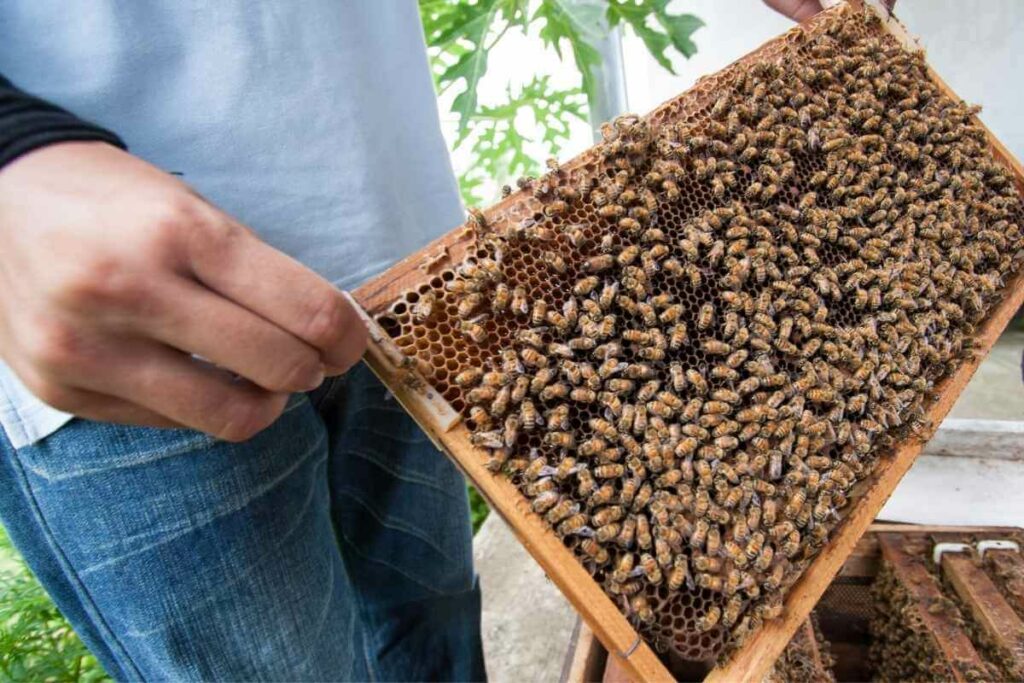
Without them, you will have to do the job yourself (artificial pollination) with a Q-Tip and your hands!
If you are wondering “Can you keep bees in a greenhouse?”, this article explains all you need to know about the potential of using bees and even housing them in a greenhouse.
We will explain what’s possible and what’s not with getting your greenhouse plants pollinated by bees.
For a Thriving Greenhouse, You Really Need Bees Onside
The US Pollination Handbook tells us that one third of the food we eat is directly or indirectly dependent on the pollination efforts of bees.
So there is no escaping the need for bees and other insects to get to work on your greenhouse plants if you want natural pollination.
Bees are by far the most numerous and active of the insect pollinators and play a vital role in transferring pollen from the male parts of flowering species to the female parts.
Without pollination, plants and crops will not fruit and produce seed.
Bees Are Pollinating Powerhouses
They have to be. Pollen is their primary protein source, which they feed to the larval bees in their colony or hive.
Bees are built to harvest the maximum amount of pollen possible from the flowers they visit. Their hairs act like velcro and attract and hold pollen grains using electrostatic forces.
Using stiff bristle-like hairs on the backs of their legs, they comb and shape the pollen into baskets so that they can carry the maximum amount of pollen back to the nest.
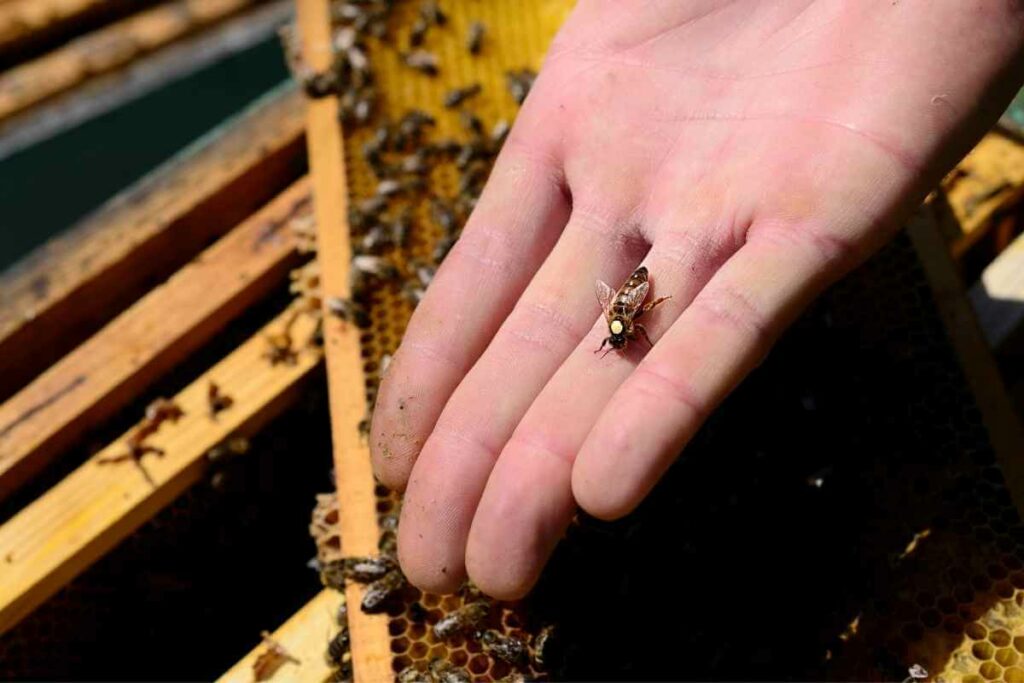
Bees increase their pollinating efficiency and effectiveness by focusing on one flower species at a time:
- This means that pollen gets transferred among flowers of the same species increasing the likelihood of successful cross-pollination which is ideal for healthy offspring plants with viable seeds.
- Flowers attract and reward bees with a sugar solution known as nectar that the bees use for energy as they go about their work.
Unless Your Greenhouse Is in Kew Gardens, Honey Bees Are Unlikely to Thrive in an Enclosed Greenhouse
Honeybees may seem like the obvious choice for your greenhouse squashes, grapes and melons, but they are likely to struggle to adapt to this unusual environment for several reasons:
- Honeybees have a hard time becoming oriented within a greenhouse and have a high mortality in them. They do not understand that they cannot pass through the glass panels and greenhouse owners may lose many to them repeatedly colliding with greenhouse glass.
- Honeybees use the position of the sun to orient themselves to the hive and nectar source, so navigation clearly becomes difficult in a greenhouse. They also need to experience seasonal temperature fluctuations.
- Space is vital for honeybees, meaning that they may cope in a large commercial glasshouse. The confinement of a small greenhouse is stressful and the number of plants are unlikely to sustain a colony.
- Some determined greenhouse growers look after a small hive in a greenhouse by providing an exit for the bees or using frosted glass and pheromones to guide the bees and stabilize the colony. Greenhouse owners also feed the bees with fondant for extra energy. They may also frost the windows to prevent the bees from attempting to fly through them.
Your Greenhouse Residents Do Not Need to Be Honeybees
Though honey bees enjoy a stellar reputation as pollinators, there are many other bee species that contribute to the hard work of pollinating plants.
It is the warmth seeking, ground-nesting bee species that you want to invite to take up long-term residence in your greenhouse.
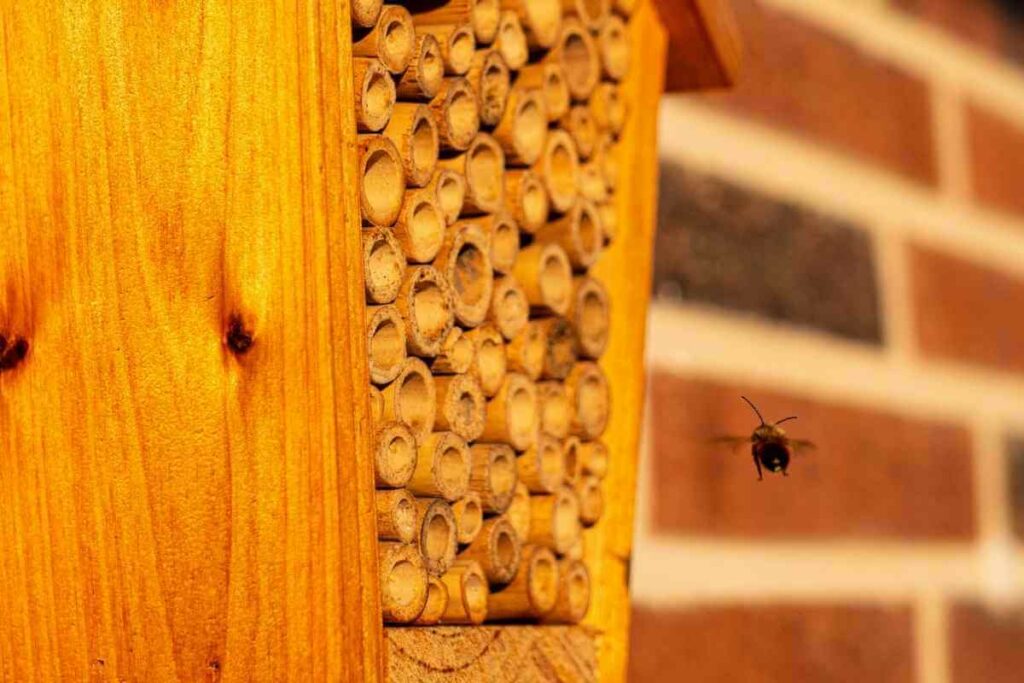
These wild bees do not live in a hive. They dig nests in soil or take advantage of crevices in masonry or wood, plant stems or tree hollows.
The bumblebee even uses abandoned rodent nests and customises its dwelling with foraged materials like leaf litter, small pebbles, sap and mud.
They also produce a waxy substance that acts as a type of mortar for building chambers to lay their eggs.
Nesting Bee Species Will Appreciate the Year round Warmth and Predator-free Comfort of Your Greenhouse
For bee species that spend autumn and early winter looking for a warm dry place to hibernate, your greenhouse could be a dream come true.
Not only does a greenhouse provide the essential warmth that prevents bees from freezing to death, but they also will be safe from predation.
Queen bees that hibernate rely on fat reserves and can remain dormant for as long as 9 months of the year!
Good to Know: Only bumble bee queens survive winter and with the invitation of a residence in your greenhouse, they can retire to very helpful living quarters.
Bumblebees Are Widely Used in Commercial Greenhouse Production
Commercial growers who need year-round pollination keep bumblebees in their greenhouses to pollinate their crops.
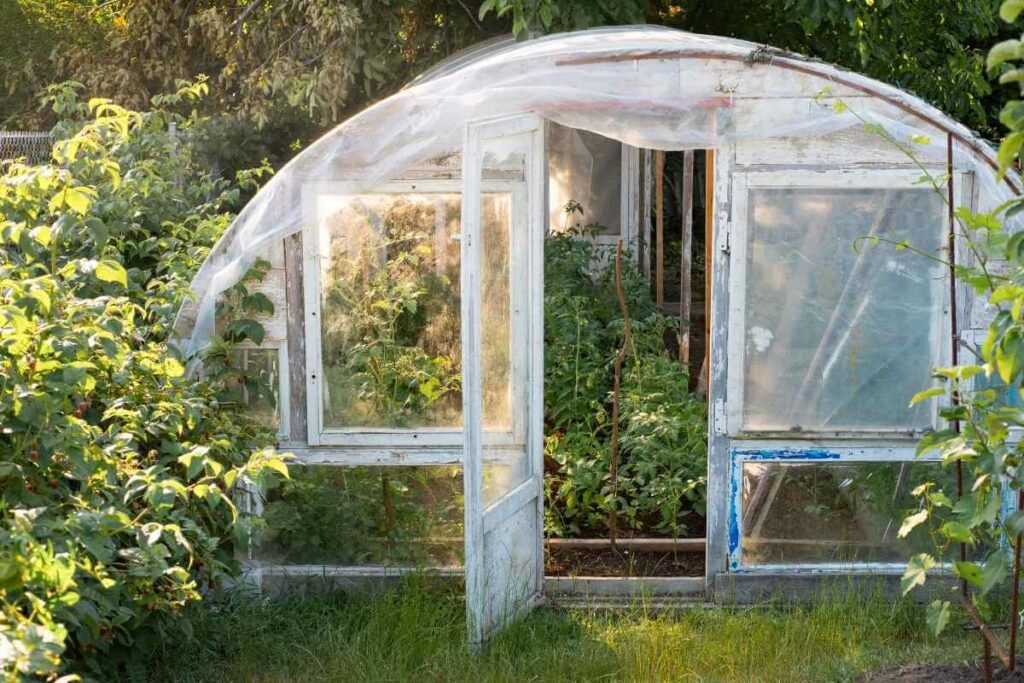
Studies have shown using bumblebees as natural pollinators increase the yield and quality of crops.
- Bumblebees are efficient pollinators and easily outwork greenhouse workers who artificially pollinate flowers. This means that using bumble bees can save on labour time and costs.
- Growers can purchase hives of Bombus impatiens bumblebees from commercial bumblebee producers. They rear bumblebees specifically for glasshouse pollination.
- Prior to releasing the bumblebees, any insecticides that are being used must be stopped to prevent the bees from being poisoned. For consistent pollinations, growers regularly introduce new hives every week as each hive has a lifespan of between 5 and 12 weeks.
Using Bombus Impatiens as a Greenhouse Pollinator
Bumblebee hives are suitable for pollinating many fruits and vegetables.
They are routinely used to pollinate commercial crops of:
- Tomatoes
- Pepper
- Strawberries
- Cherries
To give you an idea of the scale at which these greenhouse bumblebees work, a single hive provides up to 60 workers who can cover 5,000 square feet, efficiently gathering pollen on their hairy abdomens and hind legs.
Bumblebee producers provide complete hives that come with a colony containing pupae, eggs and larvae. They are shipped by courier.
The hive is supplied with a sugar solution to sustain the bumblebees in transit and as they adjust to the greenhouse.
Glasshouse growers can release the bumblebees from a protected position between one and three feet above the ground. They should not place the hive in foliage.
Once positioned, the bumblebees should be left for an hour or more to become calm and acclimatised.
After this period, the flight holes on the hive can be opened to let the bees out.
Remember This: The ventilation windows of the hive should be closed in the evenings to prevent the loss of workers.
You Have Lots of Options for Wild Bee Species That You Could Attract to Your Greenhouse
Smaller greenhouse owners can attract wild bee species that may want to make the greenhouse their home.
There are over 270 bee species in the UK, and 20,000 worldwide that do not live in colonies or hives. These bees are called solitary bees and are very effective pollinators.
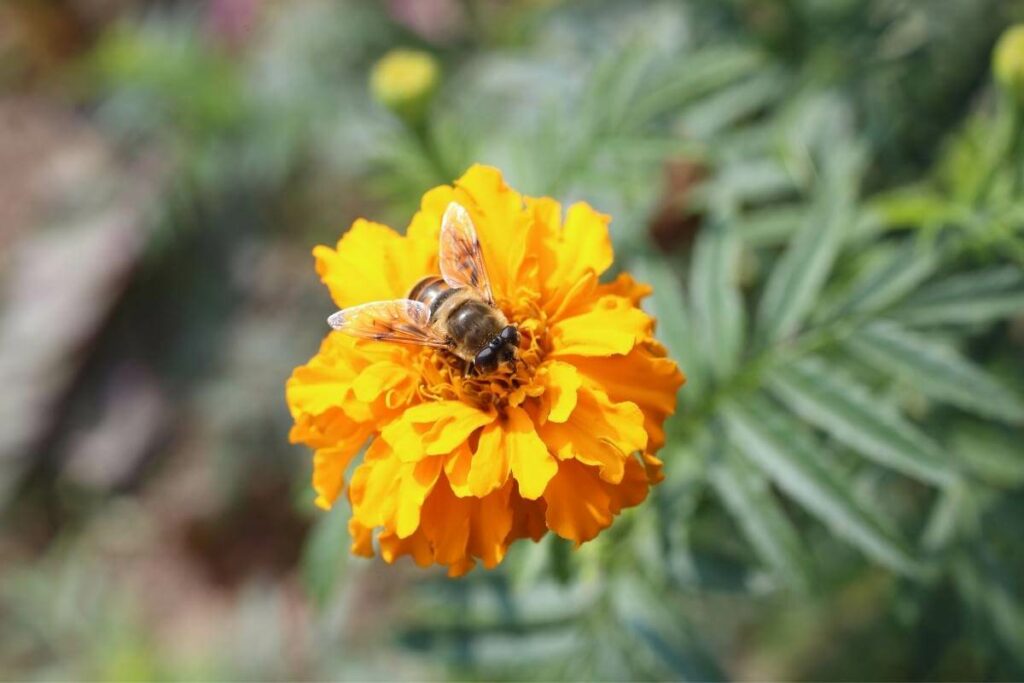
According to the Wildlife Trusts, solitary bees carry out most of the pollination in Britain.
The diversity of solitary bees means you are likely to have some species nearby that can adapt to greenhouse conditions and collect pollen from a wide variety of sources, unlike honey bees.
Stay on the lookout for these solitary bees as visitors to your greenhouse:
- Mining bees are an unassuming solitary bee species that dig their nest in the soil and collect pollen on their hind legs.
- Mason bees make their nests in the gaps or cracks in masonry. They often forage mud to build their nests, using it like a mortar. Their tubular nests are where they lay their eggs, creating individual cells with mud. Mason bees also gather pollen to bring back to their nests.
- Flower bees are easily mistaken for bumble bees. They have long tongues to probe flowers with, drinking nectar as they collect their pollen supplies on their hind legs. They are always on the lookout for the best nesting sites to colonize.
- Sweat bees collect pollen on the undersides of their bellies or hold it in their crop to regurgitate on return to their nest. They also live in soil and can be solitary or social.
Attracting Bees to Your Greenhouse
If you do not keep a hive inside your greenhouse, you need to make it an appealing place that will encourage the pollinators you need to stop by.
Here are some top tips for attracting bees to your glasshouse or polytunnel:
- Your first step is providing adequate access for visiting bees to get in and out of the greenhouse without creating a free-for-all for pests.
- Open the roof ventilation windows of the greenhouse so the bees can fly in and out.
- The bees can use air flow from open ventilation widows to get in and out of the greenhouse.
- Make a visit to your greenhouse a worthwhile stop by including plants that have a long blooming period and have a lot of nectar, fragrance and colour. Flowers that will attract pollinators include:
- Cultivate your flowering plants to mature and flower at different times so the bees have a constant supply of pollen and learn to visit the greenhouse often.
- Avoid monoculture as the bees may lose interest once the plants have finished flowering
- Don’t let the greenhouse become too hot as excessive heat will kill the bees
- Consider providing a dedicated water source for the bees.
- You could also include a bee hotel, to encourage solitary bees. Learn more about bee hotels in our article “What Is A Bee Hotel? A Beginner’s Guide To Garden Bee Hotels”.
As Winter Rolls in, Make Your Greenhouse the Place Where Bees Can Overwinter
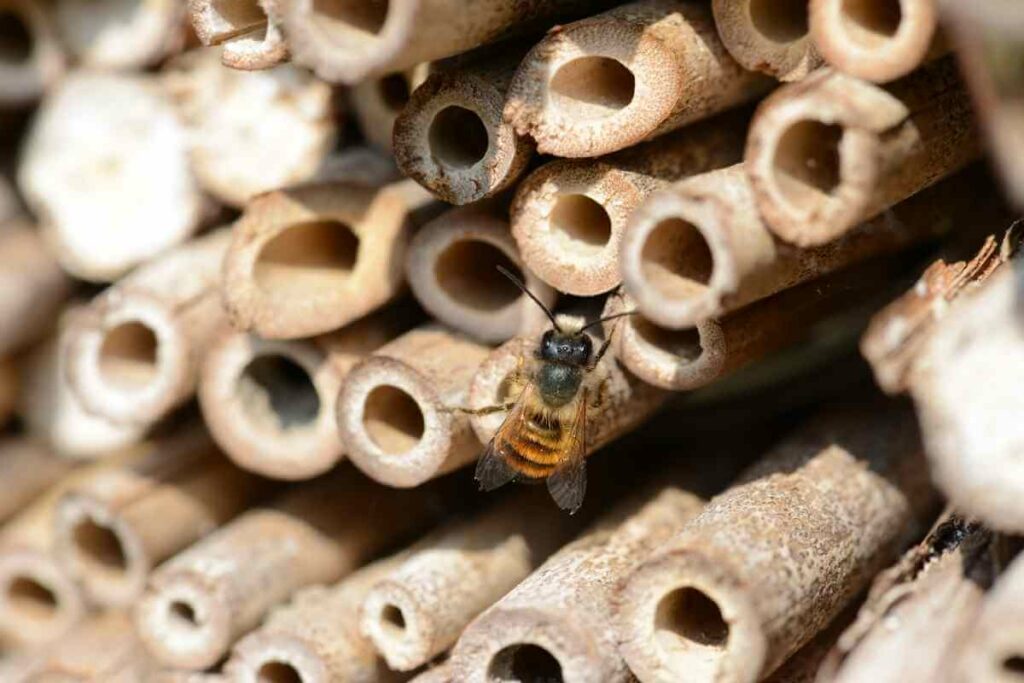
Solitary bees and bumblebees welcome crevices and gaps where they can make a nest for themselves.
Consider creating a bee hotel out of a brick with ventilation holes or a piece of wood with drilled holes.
Leave some leaf litter and debris in the greenhouse that opportunistic bees can use to furnish their nests.
Solitary bees can also use exposed soil.
Rounding Up
Bees are certainly the best choice for pollination in your greenhouse, but keeping a hive may not always be successful.
You can certainly make your greenhouse inviting to wild solitary bees and bumblebees that can make a success of adapting to this unique environment.
